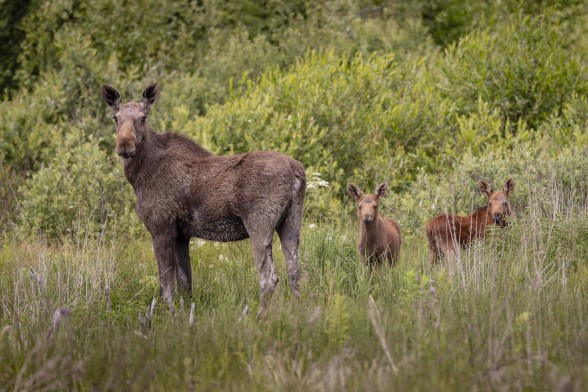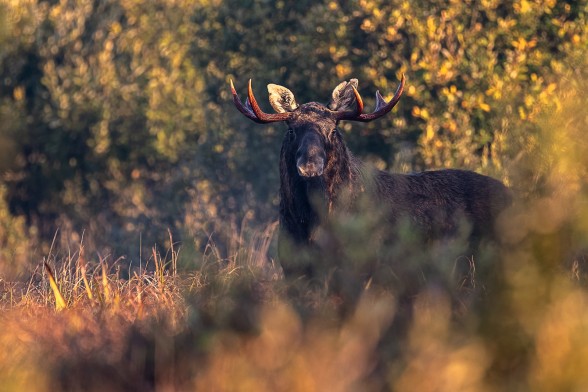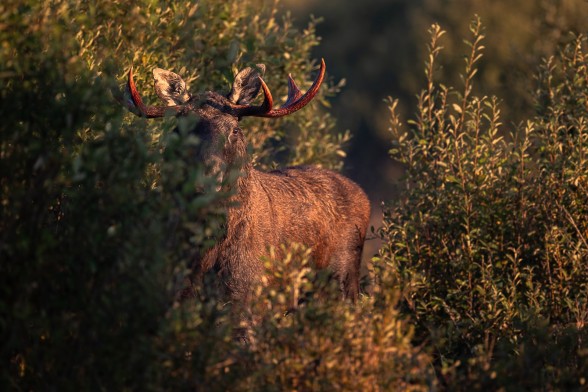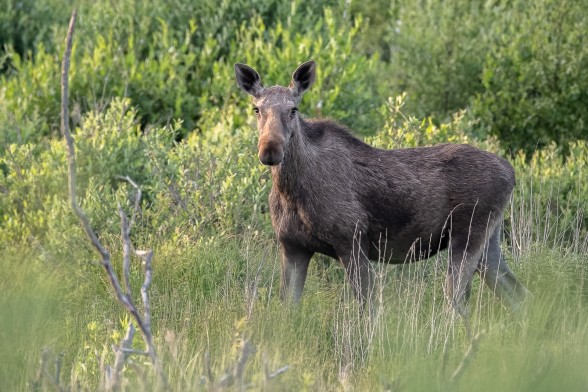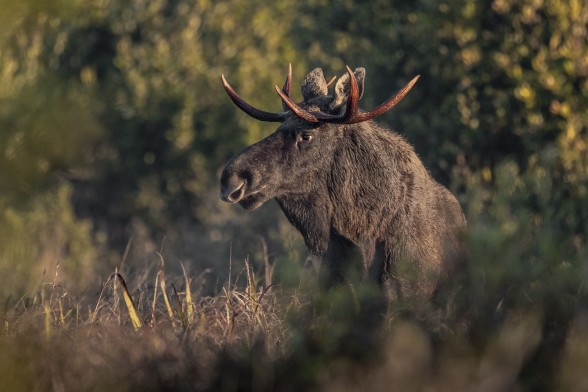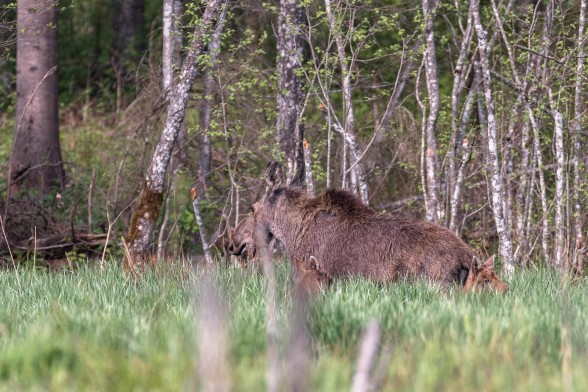
Elk
Diet
The elk is herbivore and feeds on a variety of plants and fruits. It eats large quantities of a wide variety of flowering plants other than grasses, young shoots, shoots and leaves of trees and shrubs. A moose's diet often depends on its location, but they seem to prefer the new growths from deciduous trees with a high sugar content, such as white birch, trembling aspen and maple, among many others. Water lilies and elodeas are popular aquatic plants. The elk is an excellent swimmer and its long legs allow it to wade quite deep into the water for its favourite aquatic plants. In winter, elk are often drawn to roadways, to lick salt that is used as a snow and ice melter.
Habitat
They inhabit a wide variety of forests, scrub, corpses, marsh edges, overgrown clearings and meadows. Elk require habitat with adequate edible plants (e.g., pond grasses, young trees and shrubs), cover from predators, and protection from extremely hot or cold weather. Elk travel among different habitats with the seasons to address these requirements.
Important and interesting facts
An elk weighing 360 kg eats 32 kg of food every day. As a representative of the Cervidae family, it has no upper incisors (upper front teeth), but 8 sharp incisors in its lower jaw. It also has a sharp tongue, lips and gums. The elk can reach running speeds of up to 56 km/h. Only males grow antlers, but they drop them in autumn. The antlers of an adult male can weigh 15 kilogrammes or more. Growing antlers are covered with a soft, furry covering called "velvet".
Normally, an elk is not aggressive towards humans, but if startled or annoyed, it can become aggressive and unpredictable.
An adult elk has very few enemies, but can still be hunted by wolf packs, especially females with calves.
It is a misconception that the age of an elk can be determined by the number of antlers.
Information sources: latvijasdaba.lv, Wikipedia
Photo: redzet.eu, Māris Kreicbergs
